Top 5 articles regarding green architecture in 2009
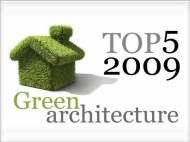 After we wrote about combination of art and technology, it was natural to shift to a theme related to green architecture. Beside showing the right path to the future architects and showing exceptional examples to experienced folks of the trade, this theme is raising awareness about more responsible building that pays its higher cost through time. The subject relates to our site theme since it covers implemented bionic systems or technology used to achieve better performance and less consumption. We are thankful to all the architects who provided us with additional information or material.
After we wrote about combination of art and technology, it was natural to shift to a theme related to green architecture. Beside showing the right path to the future architects and showing exceptional examples to experienced folks of the trade, this theme is raising awareness about more responsible building that pays its higher cost through time. The subject relates to our site theme since it covers implemented bionic systems or technology used to achieve better performance and less consumption. We are thankful to all the architects who provided us with additional information or material.
Here are the 5 most popular articles according to our visitors:
5. Green architecture – Eden Project in UK
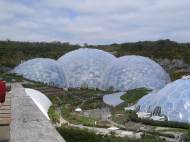 Eden Project is a greenhouse located in Cornwall, United Kingdom, which attracts loads of people. Inside the greenhouse there are several artificial biomes where they grow plants collected from all around the world. The Eden Project is constructed in an unused china clay pit. Once into the attraction, there is a meandering path with views of the two closed biomes, planted landscapes, including vegetable gardens and many sculptures.
Eden Project is a greenhouse located in Cornwall, United Kingdom, which attracts loads of people. Inside the greenhouse there are several artificial biomes where they grow plants collected from all around the world. The Eden Project is constructed in an unused china clay pit. Once into the attraction, there is a meandering path with views of the two closed biomes, planted landscapes, including vegetable gardens and many sculptures.
Besides the greener ways they get the needed power, and the awarded Waste Neutral program, the Eden Project people are working on an idea of creating the UK’s first geothermal plant that would use heat from granite outcrops beneath the Earth’s surface. Initially the plant would be used to supply the Eden Project in Cornwall but could potentially feed spare carbon-neutral electricity into the National Grid.
4. Green architecture – Melbourne Convention Centre
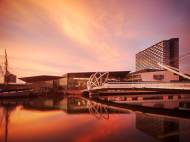 When it comes to convention centers the Melbourne Convention Centre is a convention center like no other – Australia’s premier convention center. An innovative design concept by NH Architecture and Woods Bagot turns traditional convention center design inside out and presents a building that is distinctive and worthy of its prime riverfront location in the South Wharf precinct. It also managed to set a new world benchmarks as the first convention center to be awarded a ‘6 Star Green Star’ environmental rating by the Green Building Council of Australia.
When it comes to convention centers the Melbourne Convention Centre is a convention center like no other – Australia’s premier convention center. An innovative design concept by NH Architecture and Woods Bagot turns traditional convention center design inside out and presents a building that is distinctive and worthy of its prime riverfront location in the South Wharf precinct. It also managed to set a new world benchmarks as the first convention center to be awarded a ‘6 Star Green Star’ environmental rating by the Green Building Council of Australia.
They used many green features as: energy efficient lighting, hot water systems, slab heating, solar hot water systems, black water treatment plant, CO2 monitoring and usage of carpets, paints, adhesives and sealants that are low in Volatile Organic Compounds (VOCs) and the use of low emission building materials.
3. Green architecture – Singapore art school
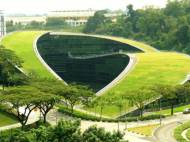 This article is about the idea which takes over most of the modern architects, and that is placing green surfaces at the roofs of the buildings. This article is about the amazing green roof at the School of Art, Design and Media at Nanyang Technological University in Singapore. This 5 story facility sweeps a wooded corner of the campus with an organic, vegetated form that blends landscape and structure, nature and high-tech.
This article is about the idea which takes over most of the modern architects, and that is placing green surfaces at the roofs of the buildings. This article is about the amazing green roof at the School of Art, Design and Media at Nanyang Technological University in Singapore. This 5 story facility sweeps a wooded corner of the campus with an organic, vegetated form that blends landscape and structure, nature and high-tech.
The curving green roofs distinguish the building from among the other structures on campus but the line between landscape and building is blurred. The roofs serve as informal gathering spaces. Besides that purpose, the roofs serve as open space, insulate the building, cool the surrounding air and harvest rainwater for the landscape irrigation.
2. Green architecture – Qatar cacti biomimicry
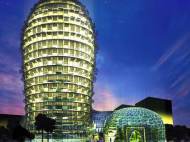 This was the article where series regarding green architecture started. Due to the changes regarding our environment and temperature it is important to emphasize the new ideas and techniques that bring more balance between our creations and nature. Creating architecture which mimics nature or shows technological advances covers two of our main subjects. Hence we started the green architecture series.
This was the article where series regarding green architecture started. Due to the changes regarding our environment and temperature it is important to emphasize the new ideas and techniques that bring more balance between our creations and nature. Creating architecture which mimics nature or shows technological advances covers two of our main subjects. Hence we started the green architecture series.
The Minister of Municipal Affairs & Agriculture (MMAA) in Qatar is getting a brand new office building that takes the form of a towering cactus. Qatar is fairly barren, covered by sand, and receives and average annual rainfall of 8.13 centimeters. Since Qatar has the highest GDP in the world, they can afford to construct spectacular buildings that can be very efficient in the hot desert environment.
1. Green architecture – self-sustainable media wall in Beijing
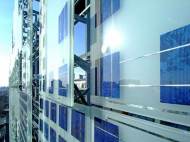 Simone Giostra & Partners Architects have designed the GreenPix – Zero Energy Media Wall – a project applying a self-sustainable digital media LED display on the curtain wall of Xicui Entertainment Complex in Beijing, near the site of the 2008 Olympics. Featuring one of the largest color LED display worldwide and the first photovoltaic system integrated into a glass curtain wall in China, GreenPix transforms the building envelop into a self-sufficient organic system, harvesting solar energy by day and using it to illuminate the screen after dark, mirroring a day’s climatic cycle.
Simone Giostra & Partners Architects have designed the GreenPix – Zero Energy Media Wall – a project applying a self-sustainable digital media LED display on the curtain wall of Xicui Entertainment Complex in Beijing, near the site of the 2008 Olympics. Featuring one of the largest color LED display worldwide and the first photovoltaic system integrated into a glass curtain wall in China, GreenPix transforms the building envelop into a self-sufficient organic system, harvesting solar energy by day and using it to illuminate the screen after dark, mirroring a day’s climatic cycle.
The polycrystalline photovoltaic cells are laminated within the glass of the curtain wall and placed with changing density on the entire building’s skin. The density pattern increases building’s performance, allowing natural light when required by interior program, while reducing heat gain and transforming excessive solar radiation into energy for the media wall.









Leave your response!